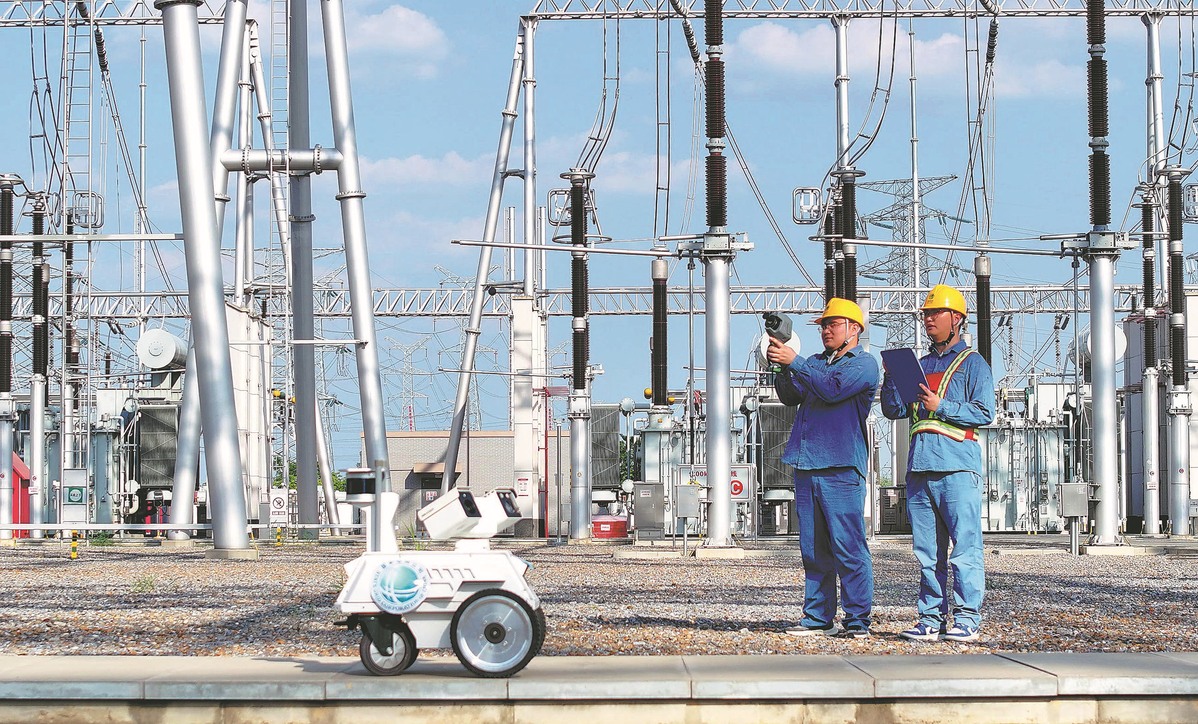Push toward unified power market gathers steam


China is making steady progress in its strategic goal of establishing a unified national electricity market by 2025, driven by an increasing reliance on market-based transactions for resource allocation, the China Electricity Council said.
The development of a unified market has achieved "significant positive progress," with the role of market mechanisms in allocating power resources continuously strengthening, said Han Fang, deputy director of the planning and development department at the council, during a news conference in Beijing on Thursday.
The push for a unified market is aimed at improving efficiency, optimizing resource deployment across vast regions, and better integrating renewable energy sources into the grid.
Data released by the council show robust growth in market activity.
From January to May this year, market-based electricity transactions reached 2.45 trillion kilowatt-hours, marking a year-on-year increase of 5.7 percent and accounting for 61.8 percent of the country's total power consumption during the five-month period, Han said.
Looking ahead, the council forecasts that market transactions for the full year will exceed 6 trillion kWh. This will represent approximately two-thirds of China's total power consumption and roughly three-quarters of the total power sold by grid companies nationwide, she said.
According to the council, the construction of provincial-level spot electricity markets, a crucial component of the national system, is accelerating, with six provincial spot markets under operation while another 19 are conducting trial runs, indicating rapid development in this area.
State Grid Corp of China and China Southern Power Grid completed the nation's first cross-regional green power trade in March.
This transaction involved the transmission of 52.7 million kWh of green electricity from the Guangxi Zhuang autonomous region and Yunnan province in the country's southern and southwestern region to the eastern metropolis of Shanghai, successfully establishing a traceable link for green power sourcing and trading across different grid operating areas.
The importance of meeting the established timeline for market reform has been underscored by top energy regulators. The National Energy Administration emphasized in June the necessity of ensuring that the "preliminary establishment of a unified national electricity market" target for 2025 is completed on schedule.
According to Zheng Shanjie, head of the National Development and Reform Commission, China's total installed power generation capacity accounts for one-third of the global total, a scale that ensures energy demand is guaranteed even during peak consumption periods in summer and winter.
This is further illustrated by the growing dominance of market transactions last year, according to data released by the council. In 2024, national market-based power transactions totaled 6.18 trillion kWh, a significant increase of 9 percent compared to the previous year.
This volume represented 62.7 percent of total power consumption, an increase of 1.3 percentage points year-on-year, and accounted for over 76 percent of the electricity sold by grid companies, up 1 percentage point, it said.
The number of market entities registered on various power trading platforms also saw substantial growth, reaching 868,000 by the end of 2024, a 16.9 percent increase from the previous year.
Adapting to the rapid expansion of renewable energy capacity, the integration of new energy sources into market trading has accelerated, Han said.
In 2024, national new energy on-grid power reached 1.84 trillion kWh. Of this, market-based transactions accounted for 1.01 trillion kWh, representing 55 percent of the total new energy generated, she said.
New energy projects have also been continuously dominating China's outbound power sector investments, said Hao Yingjie, a spokesman for the council.
As of the end of 2024, major Chinese power enterprises had a total of 51 direct outbound investment projects, with a combined investment value of $5.72 billion, up 29.32 percent year-on-year, said Hao.
These investments are primarily focused on solar power, hydropower, wind power, energy storage, and power distribution sectors, he said.




































